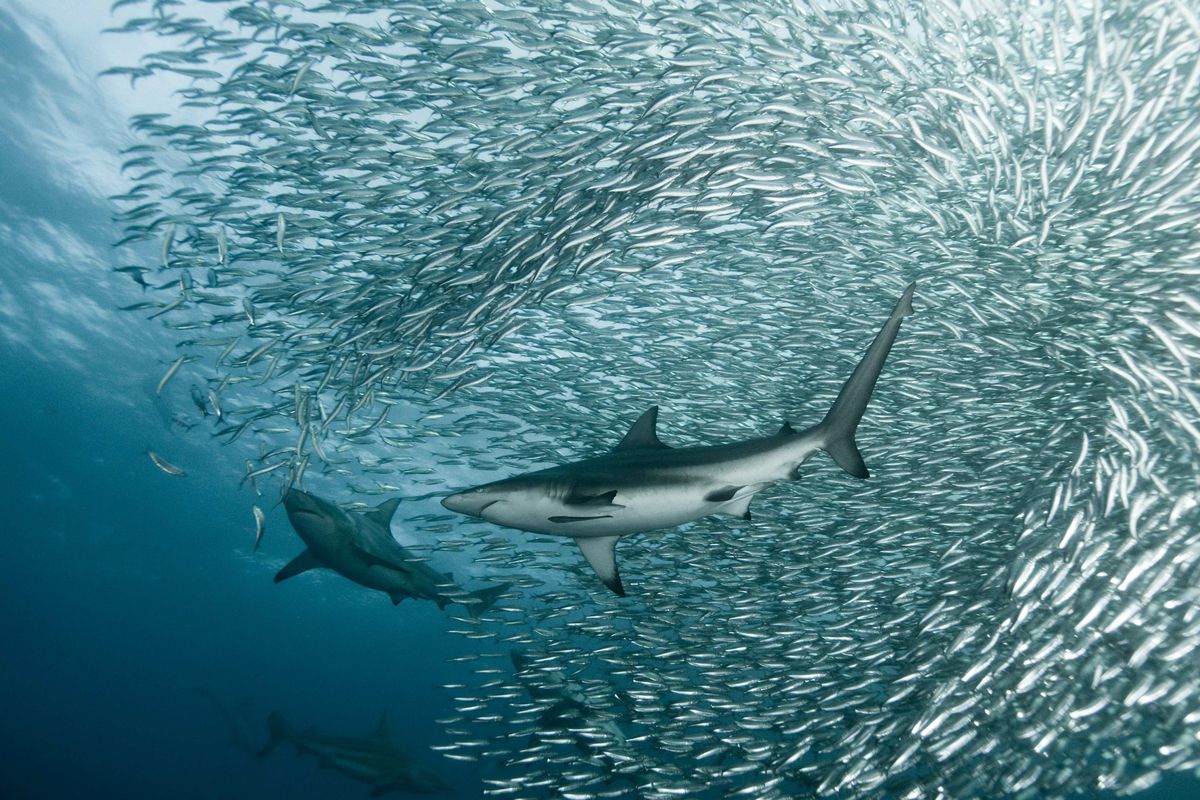Discovery brings the wild to ‘Life’
Eleven-part series debuts Sunday

NEW YORK – The theme of the 11-part Discovery Channel series “Life” is as simple as the title sounds: the fascinating things creatures large and small do to stay alive.
That’s the only thing simple about it.
The project, a co-production with the BBC that debuts Sunday (8 p.m.), was four years in the making. A team of 70 camera operators working on every continent spent 3,000 filming days, even trying technology that had never been used before, like a stabilized camera on a helicopter that gives viewers the sensation of running along with a pack of migrating reindeer.
“If there was ever a reason for someone to have HD or to invest in an HD set, this is it,” said Clark Bunting, president and general manager of Discovery Channel.
It is, in fact, a project that seems specifically created for high-definition technology. It allows for extraordinarily lifelike pictures of fruit bats munching on mangoes in Zambia, a basilisk lizard walking on water or stag beetles fighting and mating in trees.
Narrated by Oprah Winfrey, “Life” is reminiscent of Discovery’s 2007 series, “Planet Earth,” which brought big ratings for Discovery and, perhaps more important, oceans of DVD sales.
The series opens with an overview, then separate one-hour episodes broken into animal groups like mammals, primates, insects and birds. Two separate one-hour episodes are running each Sunday through April 18.
“Life” claims many filming firsts. The cameras catch gobies in Hawaii climbing waterfalls to lay their eggs, a hummingbird courtship ritual, dolphins creating circles of mud to catch prey, more than a dozen polar bears dining on a whale carcass and Komodo dragons patiently poisoning a water buffalo for two weeks until it dies.
Plants also get an episode, where time-lapse photography is used to show the entire growing season in a woodland.
Photographers needed patience. They often had to wait days or weeks just to get the specific shots they were looking for, Bunting said. Then, it could all happen in a matter of seconds, like when a pebble toad rolled down a mountain in order to escape a tarantula.
It was a requirement that the crews do nothing to alter the behavior of the creatures, he said.
“Life” is the most expensive project the network has ever embarked upon – executives won’t say how much it cost – and is being done partly to mark Discovery’s 25th anniversary this year.
“This shows Discovery at its best,” he said. “It also speaks to its future.”
Projects like “Life” are important for the buzz factor at a time when television viewers have so many choices, said Shari Anne Brill, a television analyst formerly with the Madison Avenue firm Carat USA.
“It gets people talking,” Brill said. “It gets people watching and every now and then a network needs to do that to make people aware that they’re there.”
As “Life” rolls out, Discovery and the BBC are already at work on their next project together. “Frozen Planet” will be an extensive look at signs of life and the north and south poles.